
NGC 4762 is an edge-on lenticular galaxy in the constellation Virgo. It is at a distance of 60 million light years and is a member of the Virgo Cluster. The edge-on view of this particular galaxy, originally considered to be a barred spiral galaxy, makes it difficult to determine its true shape, but it is considered that the galaxy consists of four main components — a central bulge, a bar, a thick disc and an outer ring. The galaxy's disc is asymmetric and warped, which could be explained by NGC 4762 merging with a smaller galaxy in the past. The remains of this former companion may then have settled within NGC 4762's disc, redistributing the gas and stars and so changing the disc's morphology.
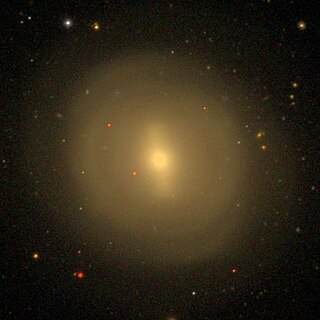
NGC 4477 is a barred lenticular galaxy located about 55 million light-years away in the constellation of Coma Berenices. NGC 4477 is classified as a type 2 Seyfert galaxy. The galaxy was discovered by astronomer William Herschel on April 8, 1784. NGC 4477 is a member of Markarian's Chain which forms part of the larger Virgo Cluster.

NGC 4488 is a lenticular galaxy located about 60 million light-years away in the constellation of Virgo. The galaxy was discovered by astronomer William Herschel on December 28, 1785. NGC 4488 is a member of the Virgo Cluster.

NGC 4483 is a barred lenticular galaxy located about 55 million light-years away in the constellation of Virgo. NGC 4483 was discovered by astronomer Heinrich d'Arrest on March 19, 1865. NGC 4483 is a member of the Virgo Cluster.
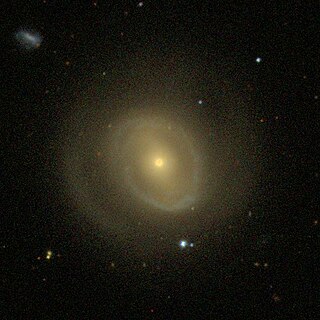
NGC 4454 is a barred spiral galaxy located about 123 million light-years away in the constellation of Virgo. NGC 4454 was discovered by astronomer William Herschel on April 17, 1784.

NGC 4733 is a barred lenticular galaxy located about 55 million light-years away in the constellation of Virgo. NGC 4733 was discovered by astronomer William Herschel on March 15, 1784. NGC 4733 is a member of the Virgo Cluster.

NGC 4620 is a lenticular galaxy located about 65 million light-years away in the constellation of Virgo. It was discovered by astronomer John Herschel on March 29, 1830. NGC 4620 is a member of the Virgo Cluster.
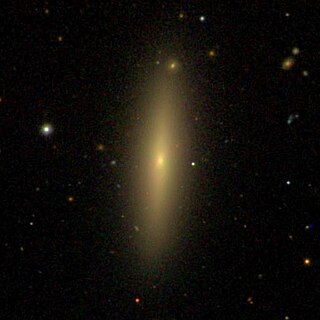
NGC 4623 is an edge-on lenticular or elliptical galaxy located about 54 million light-years away in the constellation of Virgo. NGC 4623 is classified as an E7, a rare type of "late" elliptical that represents the first stage of transition into a lenticular galaxy. NGC 4623 was discovered by astronomer William Herschel on April 13, 1784. NGC 4623 is a member of the Virgo Cluster.

NGC 4612 is a barred lenticular galaxy located about 57 million light-years away in the constellation of Virgo. NGC 4612 was discovered by astronomer William Herschel on January 23, 1784. The galaxy is a member of the Virgo Cluster.
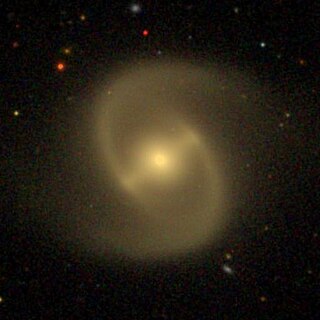
NGC 4440 is a barred spiral galaxy located about 55 million light-years away in the constellation of Virgo. NGC 4440 was discovered by astronomer William Herschel on April 17, 1784. It is a member of the Virgo Cluster.

NGC 4606 is a spiral galaxy located about 55 million light-years away in the constellation of Virgo. NGC 4606 was discovered by astronomer William Herschel on March 15, 1784. It has a disturbed stellar disk suggesting the actions of gravitational interactions. NGC 4607 may be a possible companion of NGC 4606. However, their redshifts differ by about 600 km/s, making it unlikely that they are a gravitationally bound pair. NGC 4606 is a member of the Virgo Cluster.

NGC 4479 is a barred lenticular galaxy located about 60 million light-years away in the constellation of Coma Berenices. NGC 4479 was discovered by astronomer William Herschel on April 8, 1784. It is a member of the Virgo Cluster.
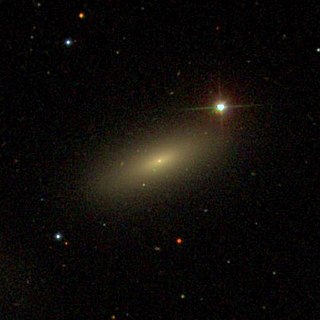
NGC 4436 is a lenticular or dwarf elliptical galaxy located about 60 million light-years away in the constellation of Virgo. NGC 4436 was discovered by astronomer William Herschel on April 17, 1784. The galaxy is a member of the Virgo Cluster.

NGC 4474 is an edge-on lenticular galaxy located about 50 million light-years away in the constellation Coma Berenices. NGC 4474 was discovered by astronomer William Herschel on April 8, 1784. It is a member of the Virgo Cluster.

NGC 4476 is a lenticular galaxy located about 55 million light-years away in the constellation Virgo. NGC 4476 was discovered by astronomer William Herschel on April 12, 1784. The galaxy is a member of the Virgo Cluster.
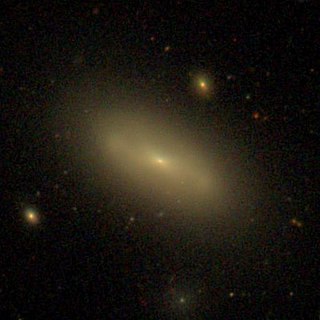
NGC 4497 is a lenticular galaxy located about 60 million light-years away in the constellation Virgo. NGC 4497 was discovered by astronomer William Herschel on March 15, 1784. It was rediscovered by astronomer Arnold Schwassmann on November 8, 1900 and was listed as IC 3452. NGC 4497 is a member of the Virgo Cluster.

NGC 4498 is a barred spiral galaxy located about 50 million light-years away in the constellation Coma Berenices. NGC 4498 was discovered by astronomer William Herschel on March 21, 1784. NGC 4498 is a member of the Virgo Cluster.

NGC 4503 is a barred lenticular galaxy located around 41 to 74 million light-years away in the constellation Virgo. NGC 4503 was discovered by astronomer William Herschel on March 15, 1784. NGC 4503 is a member of the Virgo Cluster.
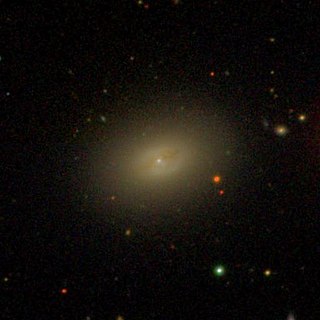
NGC 4506 is a spiral galaxy located around 50 million light-years away in the constellation Coma Berenices. It is classified as peculiar due to the presence of dust that surrounds its nucleus. NGC 4506 was discovered by astronomer William Herschel on January 14, 1787. It is a member of the Virgo Cluster.

NGC 4528 is a barred lenticular galaxy located about 50 million light-years away in the constellation Virgo. It was discovered by astronomer William Herschel on March 15, 1784. The galaxy is a member of the Virgo Cluster.




















